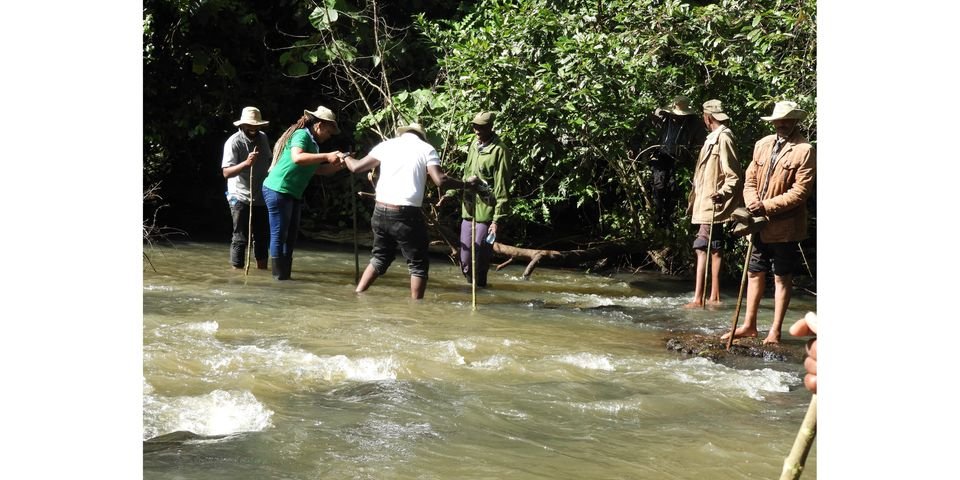Fresh elephant and antelope droppings are all over the place.
Historical caves that used to be inhabited by past generations of human beings and currently used as prayer sites by traditional communities and Christians are scattered around the deeply forested area.
Various species of indigenous trees that have lasted several generations form a dark green canopy in the area that is a source of herbal medicine.
Welcome to Masese Nyangores eco-tourism site managed by a local community in the Transmara block of the Mau forest in Bomet County.
Tarmac road
To get to the site, one drives through a tarmac road from Bomet town through Silibwet and Mugango to the edge of the Mau forest on the Bomet-Kiptagich highway.
A forest station is the first pot of call where Masese Nyangores Community Forest Users Association office is located – the association manages the eco-tourism site.
Before the trip kicks off, the tourists are taken to a nursery, teeming with thousands of indigenous tree seedlings in various stages of growth and a watch tower overlooking the forest.
Forest rangers use the vantage point in the watchtower to scan the forest and identify areas where burning of charcoal or illegal logging is rife.
Passengers disembark
A 3km drive into the forest starts before the motor vehicles come to a halt and passengers disembark with three tour guides and three armed forest guards on tow for security purposes and to ensure the visitors do not undertake any illegal or criminal activity in the forest.
The journey into the forest begins with three guides – Gilbert Yegon, Richard Langat and Shadrack Ruto – taking charge of the team.
Two of the guides — Mr Yegon and Mr Langat — armed with razor sharp pangas clear the overgrown vegetation that has blocked the footpaths with huge trees bearing marks to show the way to the caves and Nyangores River which is a tributary of the Mara River that empties its water into Lake Victoria.

The guides cut trees and chop them into walking sticks which they hand to the visitors – men and women – to use in steadying themselves on the slippery and hilly terrain.
“This is a forest inhabited by wild animals and it is not advisable to travel without a weapon to protect oneself,” John Mutai, the Masese Nyangores Community Forest Users Association chairman, says as he hands over the walking sticks, sending chills down the spines of the adventure seeking tourists.
Mr Mutai says: “Nature walks in the forest, camping activities, caves exploration, animal and bird watching, natural tree species identification, cultural experience, learning and research for students and organisations are some of the packages offered in the Masese Nyangores eco-tourism”.
The caves were used by our ancestors.
In the course of the tour, visitors are treated to chilling experiences as they jump over fresh and old elephant droppings and wade through trees the animals have uprooted as they graze.
After about a kilometer into the forest, small caves come into view, then larger ones spread across as one ventures deeper into rocky areas covered with indigenous trees.
“The caves were used by our ancestors as homes as they resided in the forest as hunters long before civilisation kicked in,” says Mr Mutai.
Prayer sites
The caves have now been turned to prayer sites for those seeking divine intervention on various matters affecting them or the society. Christians throng the area especially in the April and December holidays.
A waterfall in the forest acts as a natural shower for the adventure lovers, with very cold water falling from rocks in an elevated ground.
“After several kilometres of trekking in the forest, tourists shower in the falls in turns. This rejuvenates them. It is a very natural thing to do in this picturesque site,” says Charles Korir, the Bomet County principal tourism officer.
Antelopes darting in the trees are a common sight in the forest.
The walking sticks also come in handy in establishing the depth of the waters while crossing a river as there are no makeshift bridges.
To cross the river, one has to wade through the water carefully to avoid tripping and drowning.
Like ants
For fear of what lies ahead, visitors have to cross the expansive river while holding hands in formation, similar to ants wading through a flooded area from one ridge to the other.
It is a sigh of relief as the last person safely lands on the other side of the forest, having gone through the scary experience without donning lifesaving gear.
To complete the circuit, one crosses the river twice. One section has huge rocks acting as natural bridges running across the river with water flowing underneath.
Bird watching
The site is good for bird watching and research on species of trees and herbal medicine.
“The experience in the forest makes one understand the importance of environmental conservation in the country especially in the backdrop of the degradation of the Mau forest complex over the years,” said Fiona Nyongesa, a local tourist.
The Bomet county government is working with Kenya Tourism Board to promote the tourism circuit in the region with unique travel packages.
The region’s proximity to the Maasai Mara National Reserve and being a gateway to Western tourism circuit makes it attractive to tourists.
Credit: Source link